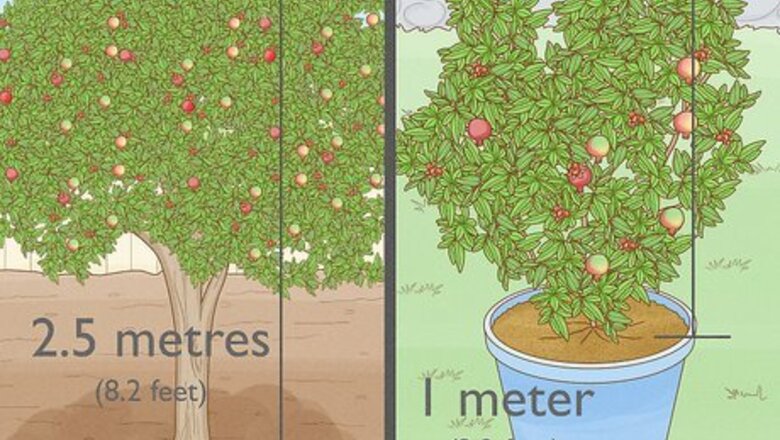
views
Planting the Pomegranate Tree
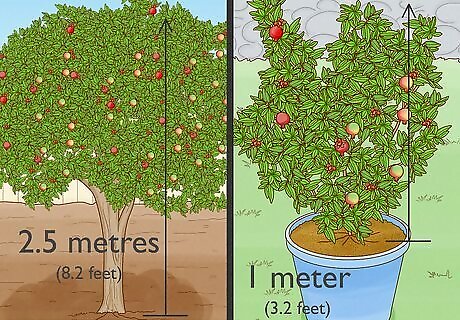
Choose a suitable variety of pomegranate. Punica granatum is a small deciduous tree. It will grow to about 2.5 metres (8.2 feet) tall, with orange flowers during the summer season. The dwarf variety "Nana" will grow shorter, to about 1 meter (3.2 feet) and are the best for growing in containers. Or, you might like the frilly flowers that grow on the "Beautiful" variety. Be sure to consider your climate when choosing a pomegranate. Most varieties cannot tolerate temperatures below 15 °F (−9.4 °C). There are several ways you can grow a pomegranate: from a seedling, a cutting, or from seed. Growing pomegranates from seeds does not guarantee you will get a certain variety of pomegranate and you will have to wait three or four years before your plant produces any fruit. If you would like to know how to germinate pomegranate seeds, click here.
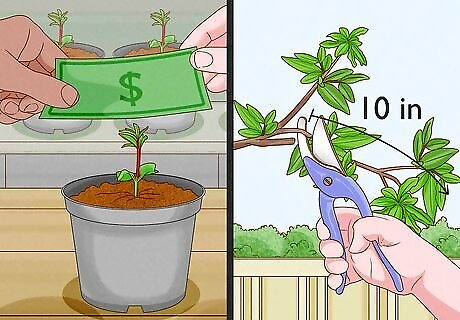
Obtain the pomegranate cutting or seedling. You can purchase a pomegranate seedling at your local nursery. Be sure to buy a variety that produces edible fruit if you are hoping to be able to eat homegrown pomegranate. However, if you have a friend who has a pomegranate tree, you can also take a cutting from that tree. Cut a branch that is at least 10 inches (25cm) long. Cover the cut end of the branch with rooting hormone to help it grow. Take the cutting in February or March, when the plant is still dormant.
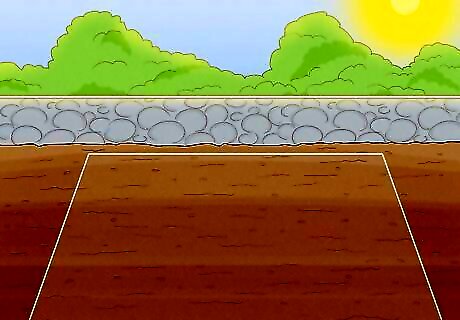
Pick a spot that that gets plenty of sunshine. Pomegranate trees love sunshine and will only fruit reliably when they get enough sun. If you do not have a spot in your yard that gets constant sun throughout the day, pick the spot that gets the least amount of shade.
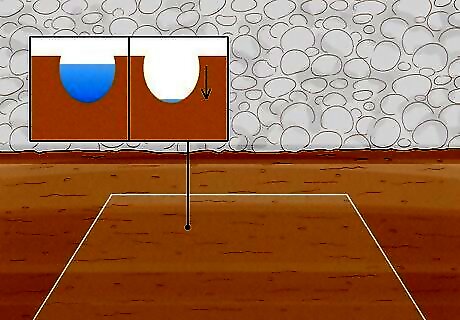
Choose a soil that drains well. Pomegranate trees are not able to cope with waterlogged soil (known as “soggy feet”). Instead, they do best in well-draining or even sandy soil. Some pomegranate growers maintain that slightly acidic soil is best for pomegranates, though they also grow very well in moderately alkaline soil. For the most part, pomegranates will adapt to the soil they are planted in, so long as it drains well.
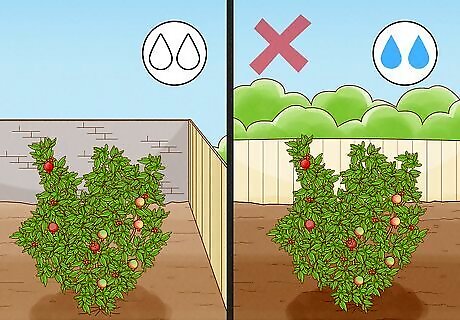
Shelter the pomegranate from wind and intense moisture. Plant the pomegranate in a warm, dry spot that is at least partly protected from heavy winds. Avoid planting it in an area of your garden that is moist, dark, or dank. Keep in mind that pomegranates thrive in hot, dry climates.
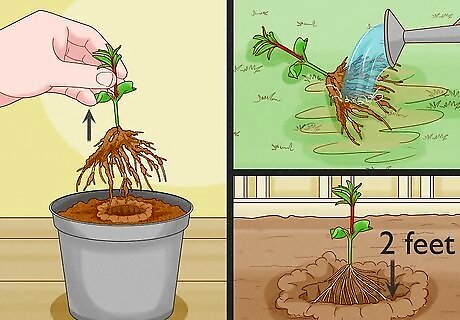
Plant the pomegranate tree. Plant your pom in early spring after the last frost. Gently remove the seedling from the container. Wash about an inch (2.5cm) of the bottom of the root ball to remove any excess potting medium. Doing this will help the plant establish itself faster than plants transferred straight from the nursery container to the ground. Dig a hole two feet (60 cm) deep and wide and place the pomegranate seedling into the hole. If you are growing the plant from a cutting, loosen the soil and plant the pomegranate branch vertically so that the cut end is about five to six inches (12.5 to 15cm) down in the soil, with the dormant buds pointing up towards the sky. Also, make sure that you dust the plant with a rooting hormone to aid root development.
Caring for Your Pom
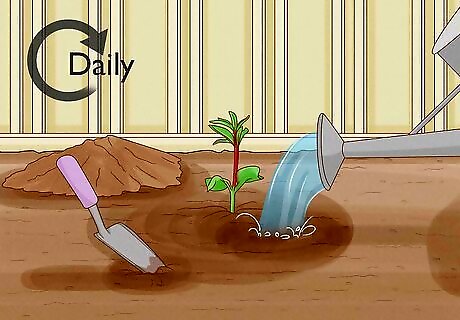
Water the pom immediately after planting it. Doing this helps to settle the soil around the newly planted pomegranate. After the initial watering, water the plant daily until it begins to grow new leaves. New leaf growth is the sign that your plant as settled into its new home. Gradually transition to watering your plant every seven to ten days. When the tree is flowering or producing fruit, give the plant a good, deep watering every week. If it rains, you don't need to water it quite as much.
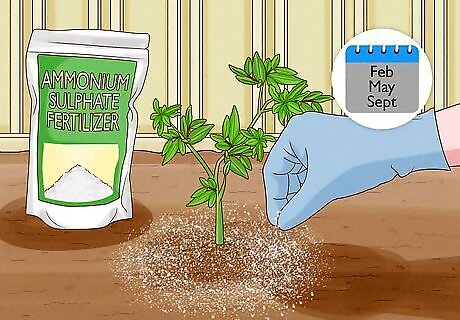
Fertilize the pomegranate tree once it has become established. Ammonium sulfate fertilizer works well for pomegranates. Sprinkle about ⅓ of a cup of fertilizer three times throughout the first year of growth (February, May, and September are ideal times to do this).
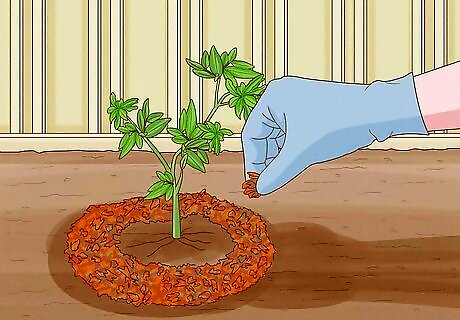
Keep the area around your pom weed-free. You don't want any weeds or other plants competing with the pom; it is also difficult to weed around the tree when it is low and shrub-like. Keep the area weeded, or lay down some organic mulch around the plant. Mulch helps to fight weeds and grasses while also retaining moisture for the plant.
Pruning and Maintaining Your Pom
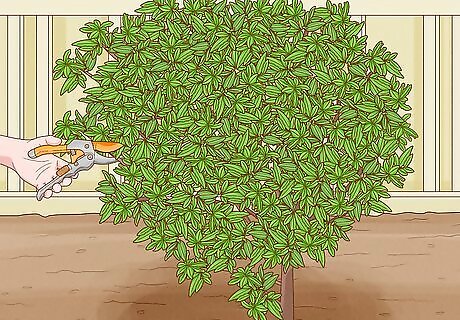
Train the plant into tree form, if desired. While pomegranates are more of a shrub than tree if left to grow untrained, you can trim the plant so that it looks like a tree. This is something that many gardeners do. Using gardening shears or clippers, cut the suckers (the smaller branches that help the plant take on its shrub form) growing at the base of the plant so that it takes on more of a tree shape. Do this shortly after the plant has become established. If you don't care whether your plant is tree-like or not, let it grow naturally. Find the right place to plant. "I had finally found a good pomegranate plant and was just about to hit the garden to place it. I'm glad I gave this a read because my first 2 choices would have been bad. This taught me about all the time, space and knowledge needed. It is now growing beautifully!" - Rachael H. Trim your bushes. "I have had pomegranate bushes for years, but I learned that the bushes needed to be trimmed properly to make them trees." - Bill M. Did you know that wikiHow has collected over 365,000 reader stories since it started in 2005? We’d love to hear from you! Share your story here.
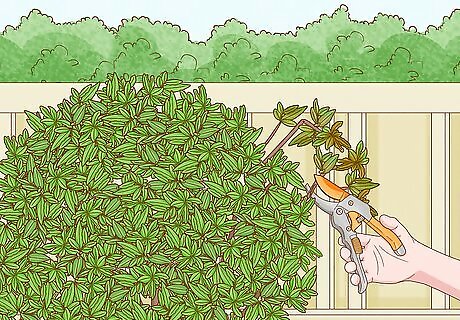
Remove dead or damaged parts of the plant. You don't really need to prune your pomegranate tree to maintain it, but it is a good idea to cut away dead or dying branches in the spring to help the tree grow well. You can also thin the plant as you see necessary. If you are growing the pom in a container, you will need to prune and train a bit more heavily, in order to keep the pom the size and shape you want it to be.
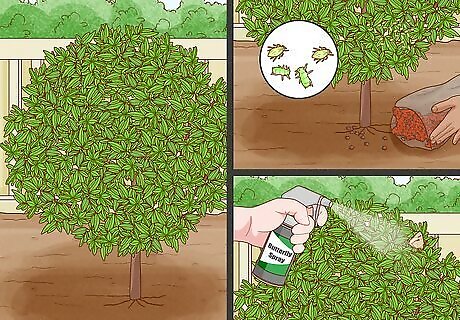
Keep the pom healthy. Avoid mold growth by making sure you do not over water the pom. The two other problems some pomegranates face are aphids and the pomegranate butterfly. You can kill aphids by using a spray bought at your local nursery or garden store. You can also use an integrated pest management practice for killing aphids, which may include attracting ladybugs, spraying trees with water to knock aphids down, or even purchasing predatory insects to consume the aphids. The pomegranate butterfly is not very common and should not be a problem. If it is, use a butterfly spray to rid your trees of the larvae.


















Comments
0 comment